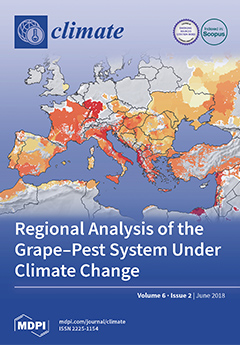We investigate the feasibility of developing decadal prediction models for autumn rainfall (
) over Central Vietnam by utilizing a published tree-ring reconstruction of October–November (ON) rainfall derived from the earlywood width measurements from a type of Douglas-fir (
Pseudotsuga sinensis
[...] Read more.
We investigate the feasibility of developing decadal prediction models for autumn rainfall (
) over Central Vietnam by utilizing a published tree-ring reconstruction of October–November (ON) rainfall derived from the earlywood width measurements from a type of Douglas-fir (
Pseudotsuga sinensis). Autumn rainfall for this region accounts for a large percentage of the annual total, and is often the source of extreme flooding. Central Vietnam’s
is characterized by a pronounced decadal oscillation signal. We use the decadal mode of
along with its notable autocorrelation and significant cross-correlation with basin-wide Pacific sea surface temperature (SST) variability, to develop four discrete time-series models. The sparse autoregressive model, with Pacific SST as an external variable, accounts for most of the autoregressive
, while taking advantage of the predictability from the basin-wide Pacific climate oscillation. Using this model, the decadal prediction of
can be reasonably achieved with a 10-year-ahead forecasting skill score (SS) about 0.46. We therefore suggest, with this paper, that forecasting
for Central Vietnam for multiple years ahead is possible using a time-series model.
Full article





